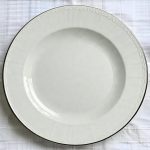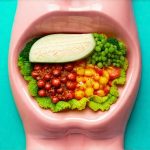Our relationship with food extends far beyond mere sustenance; it’s deeply entwined with our emotions, memories, and even cultural perceptions. While taste and smell are undeniably crucial, the visual appeal of food—its color—plays a surprisingly powerful role in how we perceive its flavor, anticipate its enjoyment, and ultimately, how effectively our bodies digest it. Color isn’t just aesthetic; it’s a primal language that speaks directly to our brains, influencing everything from appetite stimulation to satiety signals. Understanding this complex interplay between color psychology, food presentation, and the physiological process of digestion can unlock exciting possibilities for chefs, nutritionists, and anyone interested in optimizing their dining experience.
The impact of color on our perception is rooted in evolutionary biology and learned associations. Throughout human history, certain colors have signaled safety or danger when it comes to food sources. Bright reds and yellows often indicated ripe, nutritious fruits, while muted browns or greens might suggest spoilage. These instinctive responses continue to shape our preferences today, even if we aren’t consciously aware of them. Furthermore, cultural factors heavily influence color associations; what signifies celebration in one culture may represent mourning in another, leading to vastly different culinary interpretations and presentations. This interplay between innate biology and learned experience makes the study of color psychology in food incredibly nuanced and fascinating.
The Psychology of Color & Appetite Stimulation
Color directly impacts our initial assessment of a food item, influencing whether we find it appealing or off-putting. Red, for instance, is often associated with energy, passion, and excitement – qualities that can stimulate appetite. Fast food chains frequently utilize red in their branding and décor precisely for this reason; it encourages quicker decisions and increased consumption. Conversely, blue is rarely found naturally in edible foods (outside of blueberries) and is often linked to a lack of palatability, sometimes even aversion. This isn’t necessarily a universal response, but it highlights how our brains interpret color cues based on past experiences and expectations.
The effect isn’t simply about individual colors; the combination of colors matters too. A plate featuring vibrant, contrasting hues—like a red tomato alongside bright green lettuce—is generally more appealing than one dominated by muted tones. This visual diversity signals freshness and abundance. Similarly, warm colors (reds, oranges, yellows) tend to be more appetizing, while cool colors (blues, greens, purples) can sometimes suppress appetite, although this varies significantly across cultures. Consider the difference between a brightly colored Italian pasta dish versus a pale green seaweed salad – both are nourishing but evoke different emotional responses based on their visual presentation.
Furthermore, color influences our perceived flavor. Studies have shown that people tend to rate food as sweeter when presented with warm-colored packaging or tableware, and more sour with cooler shades. This phenomenon is known as crossmodal perception, where one sense (sight) influences another (taste). It’s a testament to the powerful link between our visual system and how we experience flavor. Restaurants can leverage this by using specific color schemes in their dining spaces and plating techniques to enhance the perceived taste of dishes.
Color & Digestive Processes
While the direct impact of color on mechanical digestion is minimal, it significantly affects the preparatory stages – namely, cephalic phase digestion. This refers to the physiological responses that occur even before food enters the mouth; simply seeing or thinking about food triggers salivation, gastric acid secretion, and enzyme production. The more appealing the visual presentation—and color plays a huge role in this appeal—the stronger these anticipatory signals become. A visually enticing meal primes the digestive system for optimal performance.
- Increased salivation: Colorful foods stimulate salivary glands, initiating carbohydrate breakdown.
- Enhanced gastric secretions: Visual cues activate the vagus nerve, leading to increased stomach acid production for protein digestion.
- Enzyme release: Anticipation of a delicious meal promotes pancreatic enzyme secretion, crucial for breaking down fats and carbohydrates.
This means that a beautifully plated dish, utilizing color psychology effectively, isn’t just about aesthetics; it’s about optimizing the digestive process before you even take your first bite. A dull, unappealing plate may lead to weaker cephalic phase responses, potentially hindering efficient digestion. The brain perceives the lack of visual stimulation as a sign that the food might not be worth investing energy into digesting effectively. What to check when digestion slows down can also impact this process.
Cultural Nuances in Color Perception
The influence of color on food perception isn’t universal; cultural context plays a vital role. In many Western cultures, red is associated with ripeness and sweetness (think strawberries or cherries), making it a popular choice for desserts and enticing dishes. However, in some Asian cultures, red can symbolize luck and celebration but may also be linked to danger or warning when related to food safety. Similarly, white represents purity and cleanliness in many Western societies, often used in plating techniques to convey freshness. But in certain Eastern traditions, white is associated with mourning and is rarely used for celebratory meals.
- Understanding these cultural differences is crucial for chefs and food marketers targeting diverse audiences.
- A color scheme that resonates positively in one culture may be misinterpreted or even offensive in another.
- Considering the local context ensures effective communication and enhances the dining experience.
For example, a Western chef introducing a menu with predominantly blue hues might struggle to gain acceptance in a culture where blue is associated with illness or decay. Conversely, using excessive red in a traditionally conservative culinary setting could be seen as gaudy or overwhelming. Successful food presentation requires sensitivity to cultural norms and an awareness of how different colors are interpreted within specific contexts. Changes in digestion can also vary across cultures.
Beyond Aesthetics: Color & Food Choices
The influence of color extends beyond simply making food more appealing; it can also affect the choices we make about what we eat. Studies suggest that people tend to associate certain colors with healthiness or unhealthiness, influencing their dietary preferences. Green, for instance, is often linked to freshness and naturalness, leading consumers to perceive green-labeled products as healthier options, even if they aren’t necessarily so. This explains the popularity of “greenwashing” in food marketing – using green packaging to convey a sense of health consciousness.
Orange is also frequently associated with vitamins (think oranges themselves) and can encourage perceptions of nutritional value. Conversely, colors like black or dark brown are often linked to indulgence and decadence, making us more likely to choose these options when craving comfort food. This explains why chocolate packaging often utilizes darker shades—it amplifies the perception of richness and reward.
It’s important to note that these associations aren’t fixed; they are constantly evolving based on marketing trends and individual experiences. However, understanding the general principles of color psychology can help us make more informed food choices and navigate the complex world of food advertising effectively. Ultimately, the power of color in food presentation lies not only in its ability to stimulate appetite but also in its capacity to shape our perceptions, influence our decisions, and even impact how well we digest what we eat. Understanding the role of bile is important too when considering digestion. If you struggle with food choices, consider rebuilding your trust. Don’t forget the link between food and mood either! Finally, identifying intolerances can help you choose foods that support your digestive health.


















